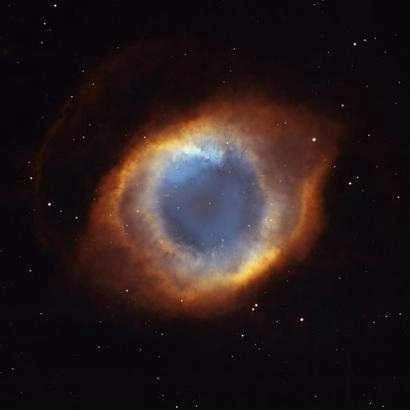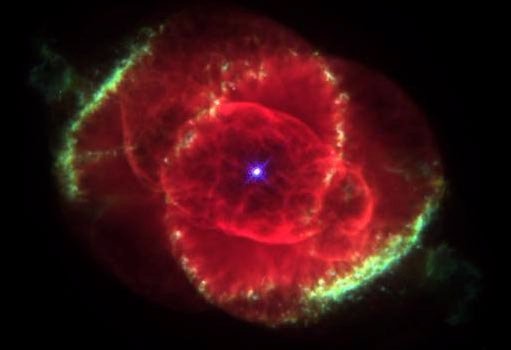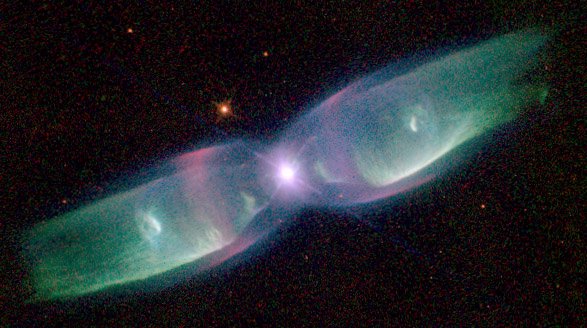Can you imagine looking through a telescope into space and God is looking back in the other end of the telescope?

Fun to contemplate, no? Okay, this isn’t really a current event, though a friend just sent it to me today. This picture was posted on NASA’s “Astronomy Picture of the Day” website back on May 10, 2003. Internet folk have been passing it around ever since with the added notation above, and a follow-up that NASA refers to this as “The Eye of God”. Urban legend…or Net legend – this pass-around is one of those chain letter type things that resurfaces every now and again.
Here’s NASA’s official caption for the picture:
Explanation: Will our Sun look like this one day? The Helix Nebula is the closest example of a planetary nebula created at the end of the life of a Sun-like star. The outer gasses of the star expelled into space appear from our vantage point as if we are looking down a helix. The remnant central stellar core, destined to become a white dwarf star, glows in light so energetic it causes the previously expelled gas to fluoresce. The Helix Nebula, given a technical designation of NGC 7293, lies about 650 light-years away towards the constellation of Aquarius and spans about 2.5 light-years. The above picture is a composite of newly released images from the ACS instrument on the Hubble Space Telescope and wide-angle images from the Mosaic Camera on the WIYN 0.9-m Telescope at Kitt Peak National Observatory. A close-up of the inner edge of the Helix Nebula shows complex gas knots of unknown origin.
To put that in English…
The Helix Nebula is about 650 light-years from Earth. It’s a popular target for astronomers because it’s easily viewable through binoculars or telescope. The phenomenon above is real. The image, however, is not, at least not in the technical sense of the word “picture”. It is a computer-generated and enhanced mosaic based on nine individual photographs taken by both the Hubble telescope and the National Science Foundation’s telescope at Kitt Peak Observatory near Tucson.
Despite the resemblance to an eye in this image, the Helix Nebula is a spiral cylinder more than one trillion kilometers long. It points directly toward Earth and therefore looks like an eye to us, rather than the tube-like structure that it is. To the best of anyone credible’s knowledge, no one at NASA has ever referred to this in any official capacity as “the eye of god”. In fact, this phenomenon and similar ones are common enough that both professional and amateur astronomers have dubbed many object “the eye of god” over time.
Here is a non-composite photo of the Helix Nebula from NASA’s website (still vaguely eye-ish):

And, just because they can be really, really pretty, here are a couple more, respectively, the Catseye Nebula and the Wings of a Butterfly Nebula:


